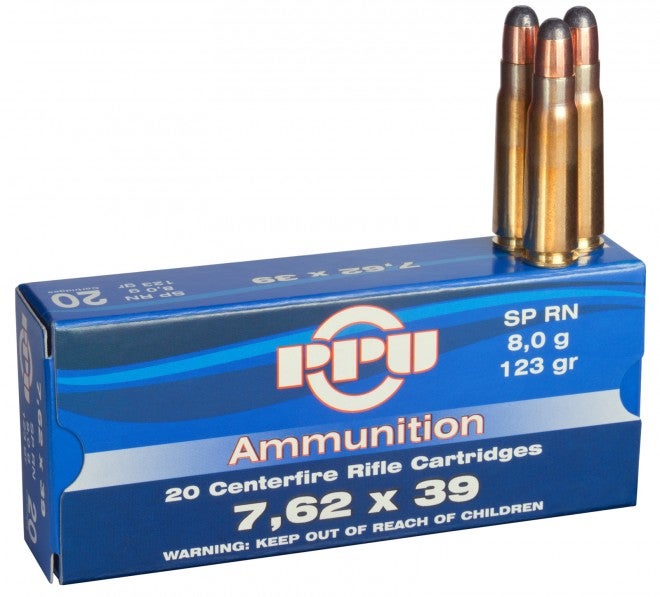Comparative Performance of Three Rifle-Caliber Pistols, Part 3: Century Arms M92
Oleg Volk 02.24.15

Table of Contents
- Comparative Performance of Three Rifle-Caliber Pistols, Part 1: PLR16
- Comparative Performance of Three Rifle-Caliber Pistols, Part 2: Spike’s Tactical ST15-LE
- Comparative Performance of Three Rifle-Caliber Pistols, Part 3: Century Arms M92
Century Arms M92 is essentially a 7.62х39 pistol variant of АКS75U 5.45×39 short automatic rifle. Like the 74U, it uses an expansion chamber in front of the muzzle to provide sufficient back pressure for cycling. The heaviest of the three pistols under consideration, it is 7.8 pounds empty and nearly nine loaded. 1/3 pound weight savings are realized by using lightweight Magpul magazine instead of the heavy Soviet-pattern steel.
The original Bulgarian pistol came with a mid-receiver aperture sight, which was neither quick nor precise in use. As configured, it had the top cover replaced with a TWS railed part with a rear-mounted aperture sight. That gave a very long sight radius and a more clear sight picture. As with Spike’s pistol, a cheek weld is necessary for effective use of the sight. The rail also permits installation of a red dot sight, which I would recommend for practical use but omitted for the initial test. Like PLR16 and ST15, M92 gave one-inch group at ten yards. Like the other pistols, it would be rather more accurate if supported on a sandbag and used with an optic.
Safety is the standard AK lever, but can be operated with the index finger. It is also notched for manual bolt hold-open. The pistol came with a superb trigger and, mainly due to the heavy weight and long-stroke piston action, very minimal recoil. Cone-shaped flash hider didn’t hide all of the muzzle flash, but it was not objectionable on a dark, cloudy day.
The main objection to 7.62×39 FMJ and Russian-made HP ammunition, especially from a shorter barrel, is that its terminal performance is limited to a straight-through hole and yawing very late in its path. The test results indicated that this chambering is the way to go for high penetration:
- S&B 123gr soft point got up to 2180fps from the 10.5″ barrel. It expanded to 0.5″ but penetrated over 24 inches of gel and wasn’t recovered.
- Federal Fusion 123gr soft point did not expand, which suggests it was designed to perform correctly from longer barrels of hunting rifles. Its nominal velocity is 2350fps, but it only managed 2280fps from a 16″ barrel (enough to expand it to 0.57″) and around 2000fps from 10.5″.
- Round nose sort point 123gr by PPU was the surprise of the line-up: it fed well in the AK pistol and expanded to 0.75″(!) with penetration of 13.5″. This seems like the most useful load for this pistol, which is nice as it is also the cheapest. PPU loads both pointed and round nose soft points. Counter-intuitively, the round nose fed better in the AK than in some bolt actions.
Of the three pistols, M92 feels the most like a rifle in terms of handling. For example, dropping an empty magazine is a two-hand operation. Considering its weight and stowed length, a rifle with a folding stock would make more sense except for the problem of carry legality. Pistols are legal to carry in far more jurisdictions than rifles are.
As we can see from the numbers, 7.62×39 edges out .300 Blackout in terms of velocity for the same bullet weight, but the barrel length difference (10.5″ to 8.1″) is the likely reason for that. Are the weight and length difference worth the ballistic advantage? That’s your call. We can also see that, for the same depth of penetration, .30 caliber bullets expand to more than twice the frontal area of .22 caliber bullets, making either x35 or x39 caliber rather more effective for defense. And while .223 pistol AK and AR based pistols have little weight advantage over their larger bore cousins, PLR16 is nearly a third lighter. For on-body carry or one-handed deployment, that difference could be critical.

